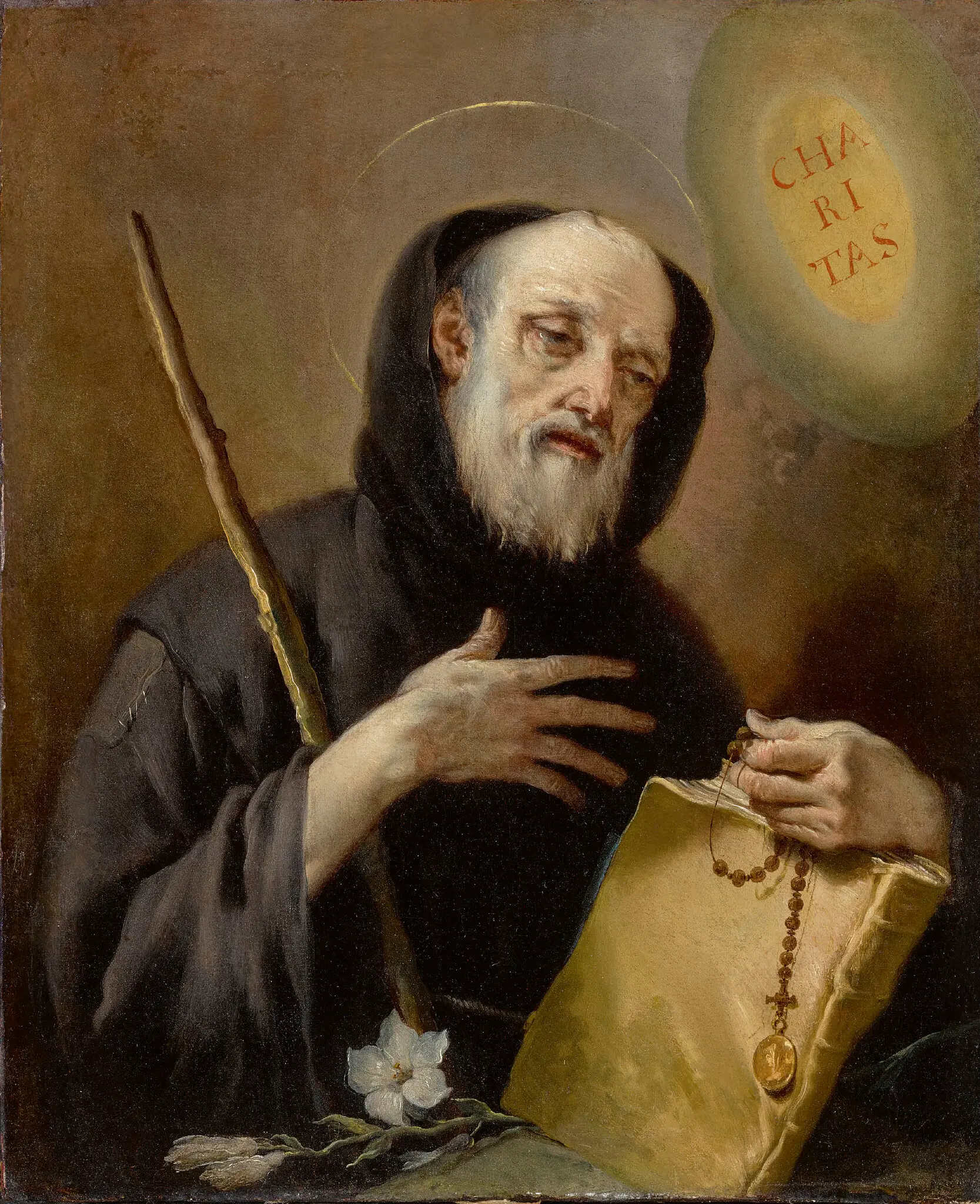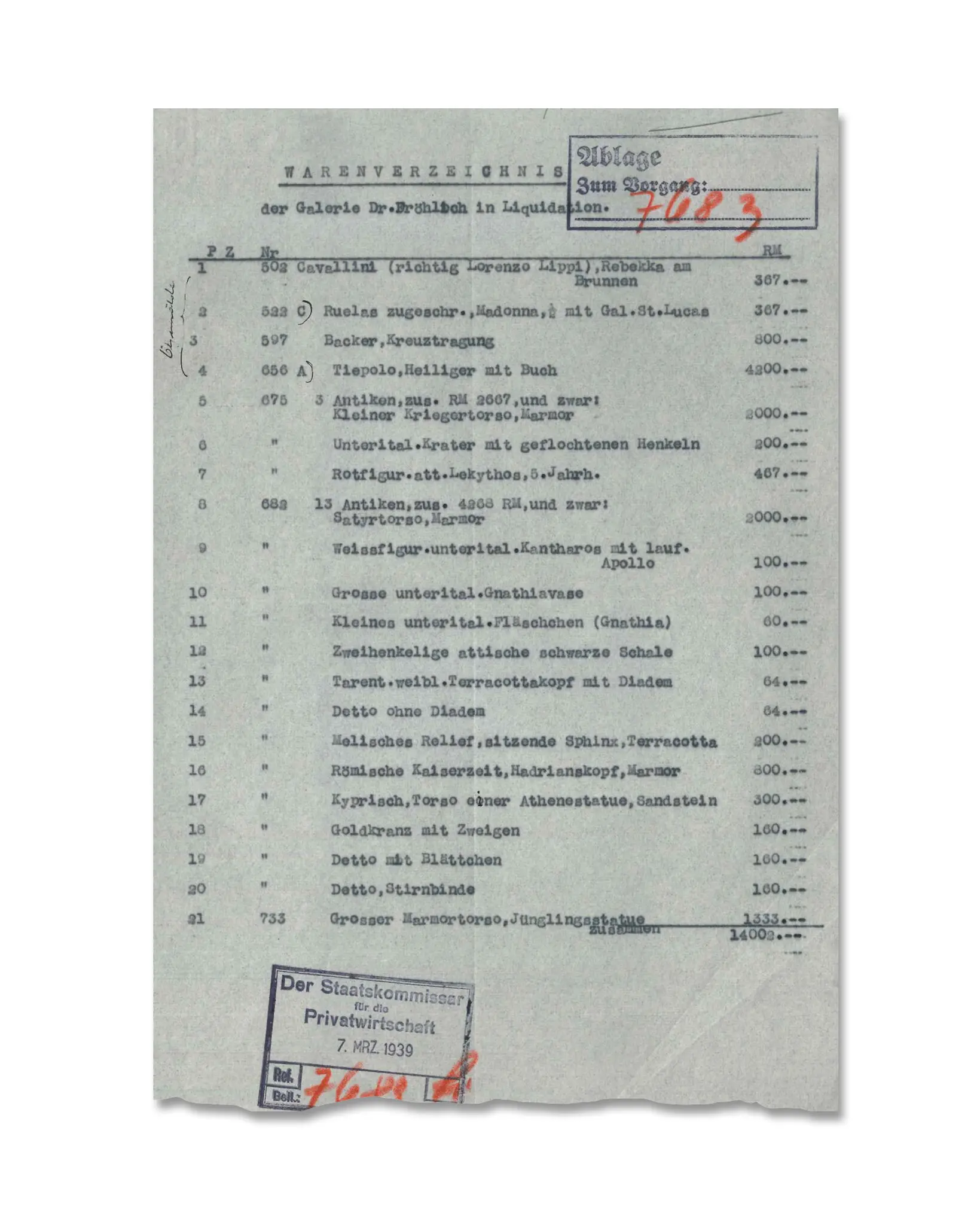News:
Court Tells Sotheby’s to Reveal Its Auction Clients in ‘Nazi-Loot’ Case
By Colin Moynihan
The ruling comes amid criticism that the art market needs to be more transparent, but the directive may be moot because talks to possibly resolve claims are under way.

“St. Francis of Paola Holding a Rosary, Book, and Staff,” painted by Tiepolo in the 1730s.
A judge in New York has opened a crevice in the traditional secrecy of the art market with a ruling that directed Sotheby’s to reveal who consigned and who bought a painting by Tiepolo, the Italian old master, that was sold at auction in 2019 for $100,000.
The ruling came in a case brought by three heirs of a Jewish art dealer named Otto Fröhlich, who say he lost the artwork during the Holocaust. The heirs sued Sotheby’s, saying they needed the names of the buyer and seller to pursue a claim for the return of the painting.
Auction houses have long kept the identities of buyers and sellers confidential to guard their privacy, but the lack of transparency in the art market has increasingly drawn attention. Though the U.S. government has decided against further regulation, critics have questioned whether the market, where millions of dollars routinely change hands, has become an unwitting haven for money laundering.
Several experts said the ruling, by a State Supreme Court justice, rendered in January but not previously reported, was unusual in that it directed that the auction house release the names of both parties in the transaction. While courts have sometimes directed that one party in a sale be named, the experts said, it is not typical for both to be revealed.
“This case certainly establishes clear precedent that where heirs provide support for their claims of restitution, auction houses will be required to disclose the names and contact information of the buyers and sellers of the claimed looted art and cannot hide behind confidentiality policies to refuse to do so,” said Geri S. Krauss, the lawyer for the Fröhlich heirs.
The order to disclose the names may soon be moot, though. Sotheby’s has rescinded the 2019 sale and has taken back possession of the painting, “St. Francis of Paola Holding a Rosary, Book, and Staff.” The auction house said it is in discussions to resolve the matter with the Fröhlich heirs and with relatives of another previous owner of the painting who are pursuing a competing claim.
The second set of claimants are heirs of Adele Fischel, described in court papers as a cousin of Fröhlich who owned the painting before he did.
“Sotheby’s remains committed to reaching an amicable resolution with all parties involved and is presently engaged in discussions with representatives of the Fröhlich and Fischel families who assert competing claims to the Tiepolo,” the auction house said in a statement.
The Fröhlich heirs said in court papers that there is “documentary evidence” that Fröhlich’s gallery in Vienna bought the painting from Fischel in 1938. Fröhlich fled Austria to escape the Nazis, the papers said, and gave the work to another gallery in Vienna “for safekeeping.” The owner of that gallery sold the painting in 1941, saying it was collateral for money owed by Fröhlich, according to records.
The heirs argued that the Tiepolo painting was sold far below the market value and that, absent Nazi persecution, Fröhlich could have repaid any debts without necessarily selling it.
The Fischel heirs are being assisted by New York State’s Holocaust Claims Processing Office, which is part of the state’s Department of Financial Services.

An inventory of art held by Otto Fröhlich in 1939. The fourth item is identified as a work by Tiepolo depicting a saint with a book.
Fischel was deported from Austria and killed by the Nazis in the early 1940s. The department said its extensive archival research indicated that she had parted with 11 works, including the Tiepolo in late 1938.
The precise details of the transaction involving the Tiepolo remain unknown, according to the documents reviewed by the department, and there was no mention of Fröhlich in Fischel’s files.
“As discussions remain ongoing and no agreement has been reached yet, the Department cannot comment further,” the Financial Services spokeswoman said in a statement.
James Palmer, the founder of an art recovery firm, Mondex, which is working with the Fröhlich heirs, said the disclosure of the names by Sotheby’s would not be necessary in the event the work is returned.
“The objective was really for us to right this wrong,” he said.
The decision in the Tiepolo case is unlikely to immediately affect how auction houses do business, said Thomas C. Danziger, an art market lawyer in Manhattan, but fits into a larger framework of disclosure in a business that has long thrived on being opaque.
“Good auction house specialists can talk for hours about the merits of a painting but will always develop laryngitis when asked for the name of the painting’s owner,” he said.
Stronger disclosure laws have recently been adopted in parts of Europe. Starting in 2020, people involved in art transactions in Britain of more than 10,000 euros have been required to register with the government’s tax agency, and dealers and auctioneers have had to establish the identity of sellers and buyers. The changes, however, did not require parties in the art market to publicly disclose the names.
Sotheby’s had argued in court papers last year that the 1941 sale of the Tiepolo had not been forced and that the Fröhlich heirs had waited too long to make their ownership case.
The auction house also defended the privacy it affords clients, describing it in court papers “as a matter of industry practice.”
In an affidavit, Lucian Simmons, the auction house’s worldwide head of restitution, said the confidentiality was not “merely a matter of policy,” adding that Sotheby’s could not disclose client information without “express permission” from them.
“Sotheby’s legal agreements and conditions of sale require the parties to keep information confidential,” Simmons stated, adding that in some places where the auction house and its affiliates do business, including Britain and the European Union, “there are privacy laws and regulations that are far stricter than those in New York, concerning the disclosure of client information.”
Art experts said that auction houses prefer to maintain anonymity when it comes to their clients in part to avoid broadcasting to competitors the identities of people who own major artworks and those who may be interested in spending vast sums to acquire them.
Justice Arlene P. Bluth, who handled the Tiepolo petition, briefly addressed the issue of anonymity in her decision.
In granting the Fröhlich heirs’ request to learn the names, she wrote that Sotheby’s had not provided to the court a copy of its confidentiality policy or cited binding case law that demonstrated it holds a blanket right to withhold the names of buyers and sellers.
“While it is understandable that respondent would not freely disclose buyers and sellers to anyone who asks,” Justice Bluth wrote. “That, standing alone, is not a reason to deny petitioners’ requests for relief.”


